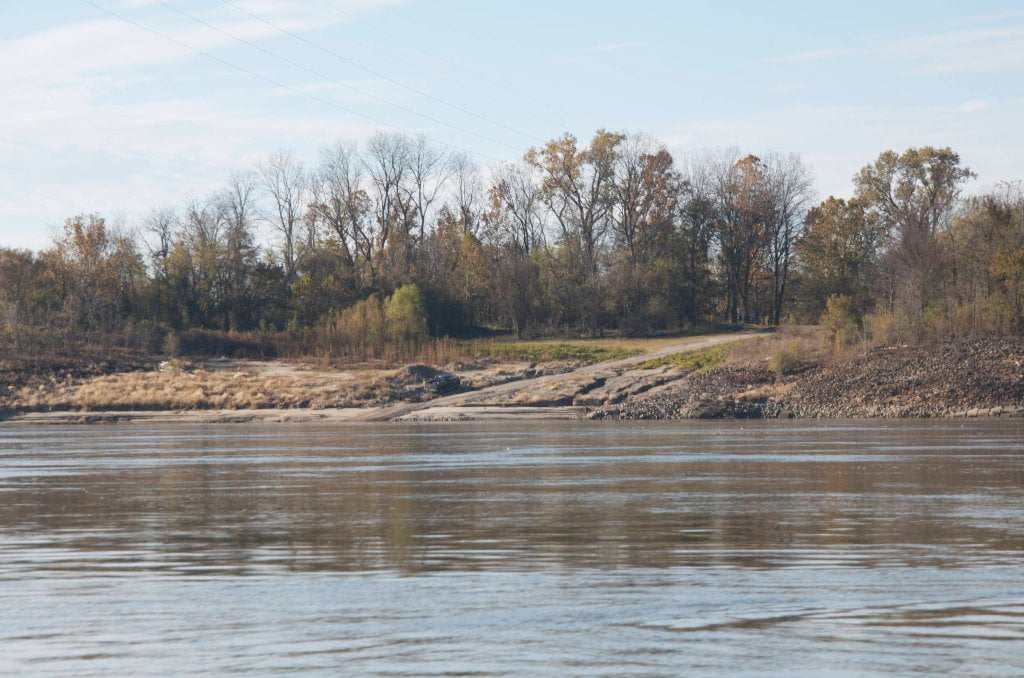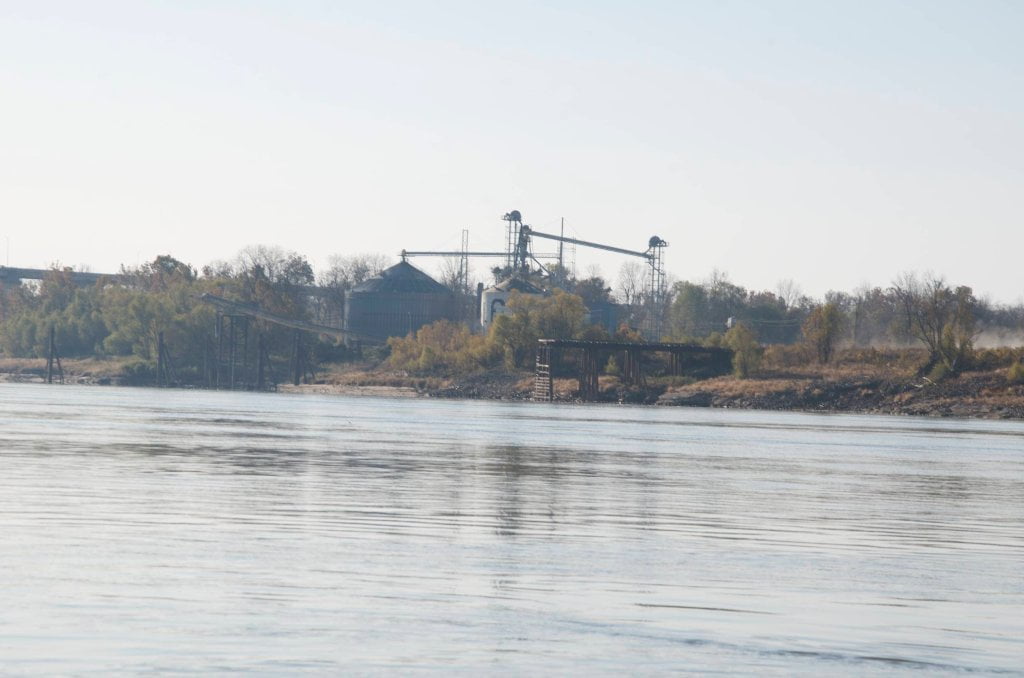The Lower Mississippi River Water Trail
A sandboil is created when flood water seeps under the base of a levee through sand in the levee foundation. If the pressure of the seep water is high enough, the sand within the levee foundation can be eroded out, causing the overlying levee to collapse. Boils occur all along the levee system in major floods. They are usually brought under control by ringing them with sandbags, to a height that equalizes the pressure and reduces the flow of water through them.
There was a large sandboil at Vaucluse in 1922, and in the flood of 1929 a sandboil in the same area built up a crater of sand that was about 15 feet wide across the top. It was brought under control, and the levee held. In the flood of 1973, there were boils in the Vaucluse area again, but again they were brought under control.
RBD 531.5 Sunnyside Landing
Sunnyside is a public boat ramp built from broken concrete and tattered revetment which drops into the river at the edge of a large eddy. Paddlers needing access be ready for fast waters and a strong rip-eddy with large boils and small whirlpools. Land access is from US 82, turn north on the first paved road in Arkansas, and then bear right at the fork onto the gravel road over the levee. Continue on gravel then turn left at river’s edge for parking and access. Closest Landing to Lake Village Arkansas, which sits on the shores of Lake Chicot seven miles to the west.
530.7 Greenville Bridge
The Greenville Bridge is the only bridge in the 200 miles of river between Helena and Vicksburg. This striking new concrete & steel cable-stay bridge was completed in 2010 after 19 years of planning and construction. At the time of its opening, it was the longest cable-stayed bridge over the Mississippi, and the fourth longest in North America. The old Greenville Bridge was the most dangerous bridge on the Lower Mississippi, and long enjoyed the status of being hit by more tows than any other bridge in the vast Mississippi drainage. The bridge seemed to invite disaster. There is said to be $1 million of lead buried under the bridge in the mud from a towboat wreck. In the 1950s it was struck from the air by an Air Force plane. The old bridge has been removed as a hazard to navigation and recycled. It has been removed for good reasons, but I still miss the old bridge. It was always a thrill driving across the river on its narrow roadway and feeling it sway a little with the weight of big trucks. It had more feel than the new bridge, and the views of the river were the best you could get outside of paddling a canoe or flying in an airplane. The new bridge is beautiful, monumentally so. But you can’t see the river over its tall solid concrete side rails. And that’s too bad. That’s the one experience of the river most Americans have — is driving over the river. Now you can’t even see the river here.
Paddlers can enjoy the sensation of floating under this monolithic structure while trucks and other traffic zoom overhead on US Hwy 82 connecting Texarkana with Birmingham.





Leave A Comment
You must be logged in to post a comment.